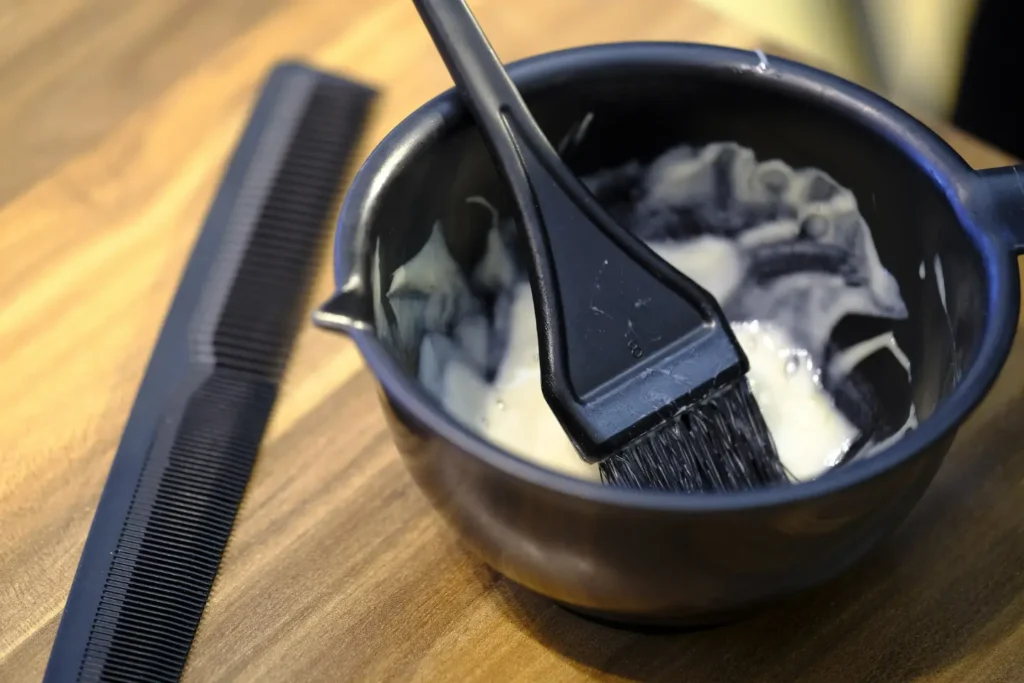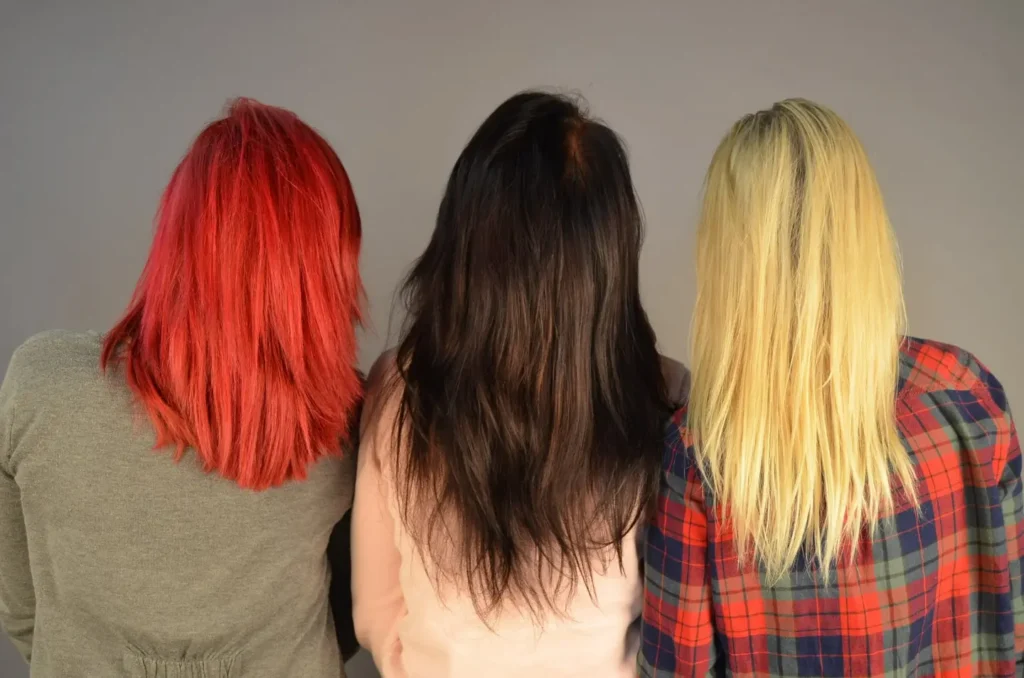Selecting the best hair color helps to accentuate your natural qualities and improve your whole look, so it is more than just a cosmetic choice. Choosing a tint that clashes with your skin tone could make you seem washed out or unduly harsh. Conversely, the correct color of your hair can accentuate your eyes and skin.
Colorist Emma Reed notes, “Matching your hair color for skin tone can be the difference between a fresh, lively look and one that seems off. Everything is about balance.”
Supported by professional guidance to enable you to make the correct decision, this article will explain how to select the ideal hair color for your skin tone.
Understanding Skin Tone and Undertone
Understanding the variations between skin tone and skin undertone will help you choose hair color. Your skin tone describes the surface color of your skin—fair, light, medium, olive, or dark. Conversely, your undertone—which might be chilly, warm, or neutral—is the subdued color under the surface level.
How to Determine Your Skin Undertone
There are many easy ways to help determine your undertone:
- Vein color test: Look at the wrist veins on you. You most certainly have cold undertones if they seem more blue or purple. Their seeming greenish hue indicates warm undertones.
- Jewellery test: Do you look better with jewellery set in gold or silver? If silver fits you better, you have cool undertones; gold is more suited for warm undertones.
- Sun exposure reaction: Think about how the sun treats your skin. You probably have cool-toned burning sensitivity. You have warm tones if you tan readily.
Knowing your undertone can help you choose the correct hair color to accentuate your natural complexion.
Categories of Skin Tones
Choosing a hair color calls for an awareness of your skin tone. Common skin tone classifications are broken out here:
- Fair: Very pale skin, often with cool undertones.
- Light: Light skin, sometimes with freckles or slight pink hues.
- Medium: Skin that tans easily and rarely burns.
- Olive: A light to medium brown skin tone with greenish undertones.
- Dark: Deep, rich brown skin.
Hair Color Families
There are several families of hair colors, each better matched to particular skin tones and undertones.
- Cool tones: Ash blonde, platinum, and jet black use cool tones.
- Warm tones: Golden blonde, copper, and chestnut brown are warm tones.
- Neutral tones: Beige blonde, mushroom brown
Best Hair Colors for Different Skin Tones
Fair Skin:
- Cool undertones: Good choices are platinum blonde, ice blonde, and cool browns if your fair complexion has cool undertones. These tones accentuate your complexion without dominating it.
- Warm undertones: If your undertone is warm, think about copper red, honey, or golden brown. These tones warm your skin.
Light Skin:
- Cool undertones: For those with light skin and cool undertones, ash blonde and light cool brown are ideal. These colors offer distinction without running counter to your own hue.
- Warm undertones: The warmth in your skin is highlighted by golden blonde, caramel, and auburn tones, therefore producing a healthy glow.
Medium Skin:
- Cool undertones: Chocolate brown and deep auburn give depth and richness, and they fit your complexion for medium skin with cool undertones.
- Warm undertones: For medium complexions with warm undertones, caramel highlights and golden brown look great.
Olive Skin:
- Cool undertones: Olive complexion with cool undertones will benefit much from espresso and blue-black tones. These rich, dark hues accentuate your skin’s greenish undertone.
- Warm undertones: Honey blonde and caramel brown give warmth without looking washed out and soften olive skin with warm undertones.
Dark Skin:
- Cool undertones: Offering sleek, strong contrast, blue-black and cool brown tones look good for darker complexion with cool undertones.
- Warm undertones: Rich brown tints and caramel highlights help dark skin with warm undertones to give dimension without overwhelming your inherent beauty.
Considering Eye Color
Your eye color can also influence the best hair color for you. For example:
- Blue eyes: Ash blonde or cool browns enhance blue eyes.
- Green eyes: Red or auburn tones make green eyes pop.
- Brown eyes: Rich brown or caramel shades complement brown eyes.
Transitioning From Your Current Hair Color
You should have reasonable expectations if you are thinking of a significant color change, say from dark to bright or vice versa. Perhaps a slow approach might help to prevent injury. Dermatologists focused on hair care: “Hair health should always be a priority while changing color. Protective treatments between sessions are crucial since bleaching can weaken the hair.”
Maintenance Considerations
Different hair hues need different degrees of upkeep. As follows:
Lighter colors might call for more frequent touch-ups to preserve consistency. Products with color-protecting properties: To maintain the brightness and health of your new color, use shampoos and conditioners especially meant for colored hair.
Dermatologist Dr Emily Carter advises, “Using sulfate-free shampoos and conditioners can extend the life of your hair color and protect your scalp from irritation.”
Seasonal Changes
Your hair color could fluctuate with the seasons and call for a change as well. For instance, in summer, when your skin might be brown, lighter tones could be more appealing. Darker tones can be pretty stunning in winter when your skin is paler.
Hair Color Trends
Balayage and ombre are among the present hair color trends. Though trends are great for experimenting with, make sure they still match your skin tone. See a professional colourist to get a modern style that accentuates your skin.
Professional vs. At-Home Coloring
Should you be thinking about coloring your hair, you should carefully analyze the advantages and drawbacks of professional versus at-home coloring. Expert colorists can match your skin tone precisely to your hair color. Choosing the correct shade and closely following the directions can help you avoid harm in at-home coloring.
Special Considerations
Gray Coverage
Particularly when trying for complete coverage, gray hair can be difficult to color. Given their frequently higher pigment content, dermatologists advise utilizing solutions meant especially for hiding gray hair.
https://www.ncbi.nlm.nih.gov/pmc/articles/PMC5418751/
Thinning Hair
Lighter hues might occasionally help to lessen the look of thinning hair. Christina N. Lawson points out, “Choosing a lighter hair color can make thinning hair less noticeable, as darker colors tend to highlight gaps and scalp exposure.”
Correcting Unflattering Hair Color
Sometimes the color of our hair turns out not exactly right. There are correction choices if you discover your new color does not match your skin tone. To better match your skin, a skilled colorist can help tone down or modify your hair color.
Hair Color and Personal Style
Apart from skin tone, your own style and way of life should affect the color of your hair. Bold colors, for instance, might not be appropriate in some business environments, but more flexibility can come from subdued tones.
Conclusion
Picking the correct hair color for your skin tone will accentuate your inherent attractiveness and balance your whole look. Your skin tone, undertone, eye color, and lifestyle can help you choose a hair color that is ideal for you. If you’re not sure, consulting a professional colorist or dermatologist will help you choose what would be best for your personal style and hair condition.



